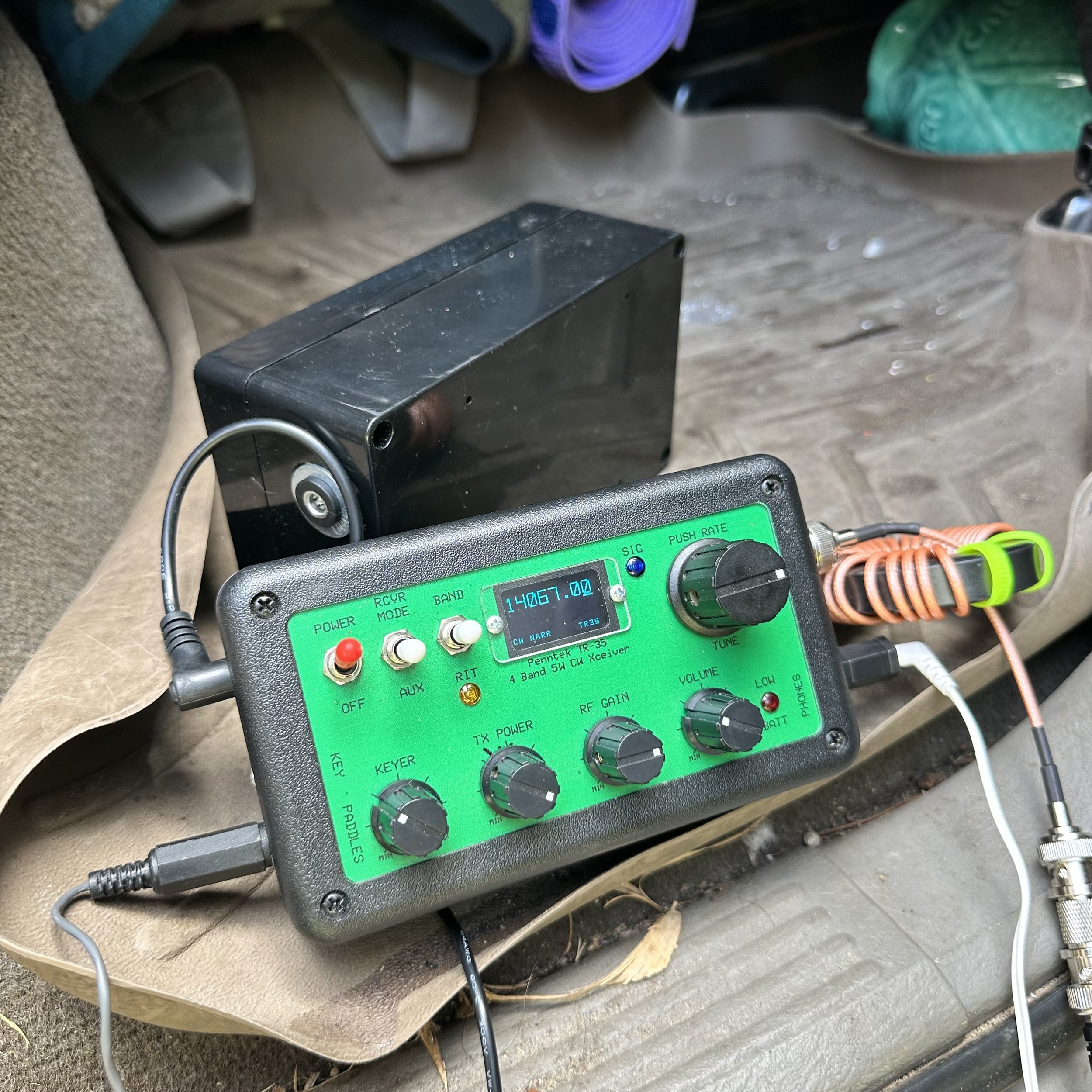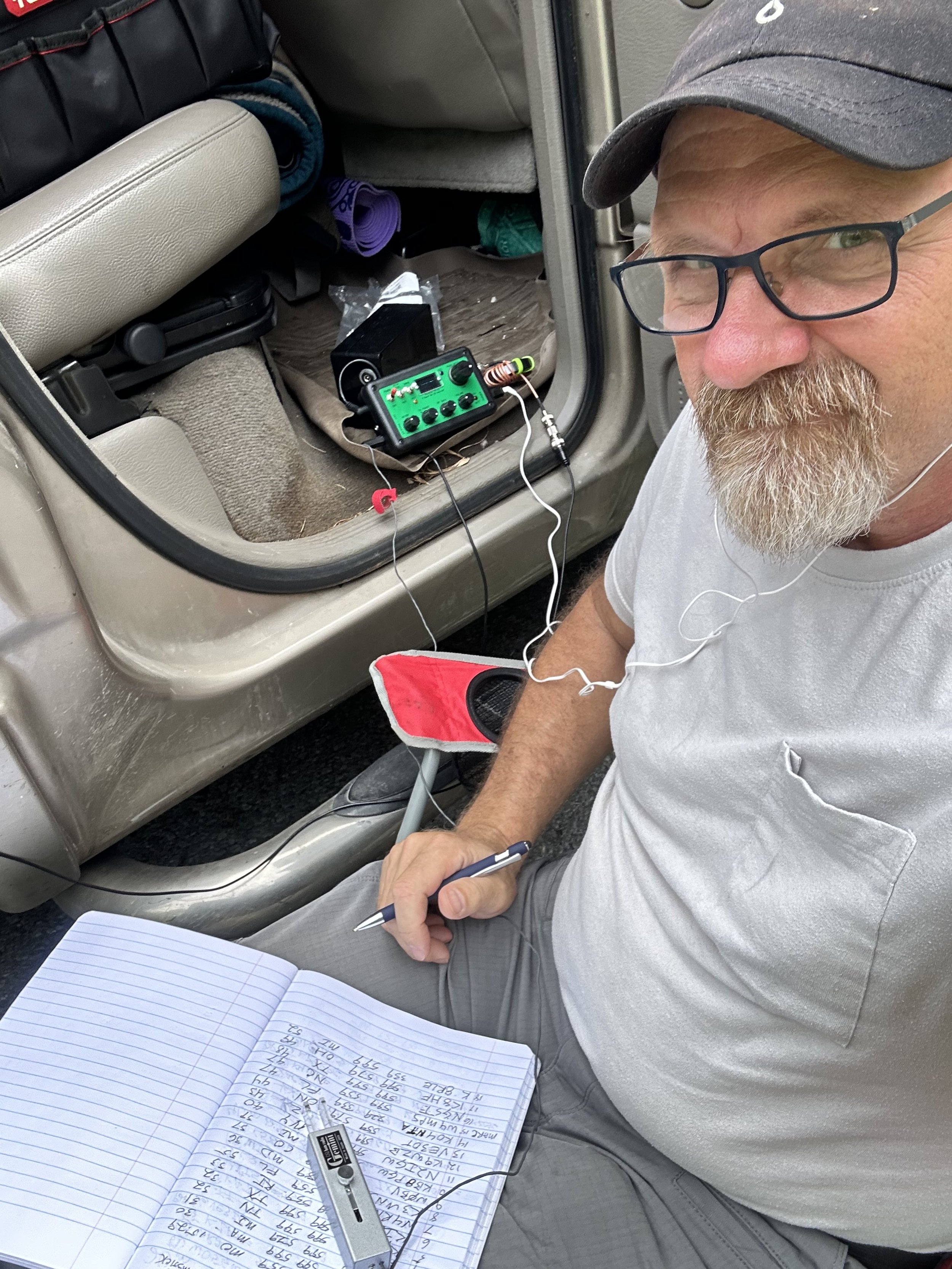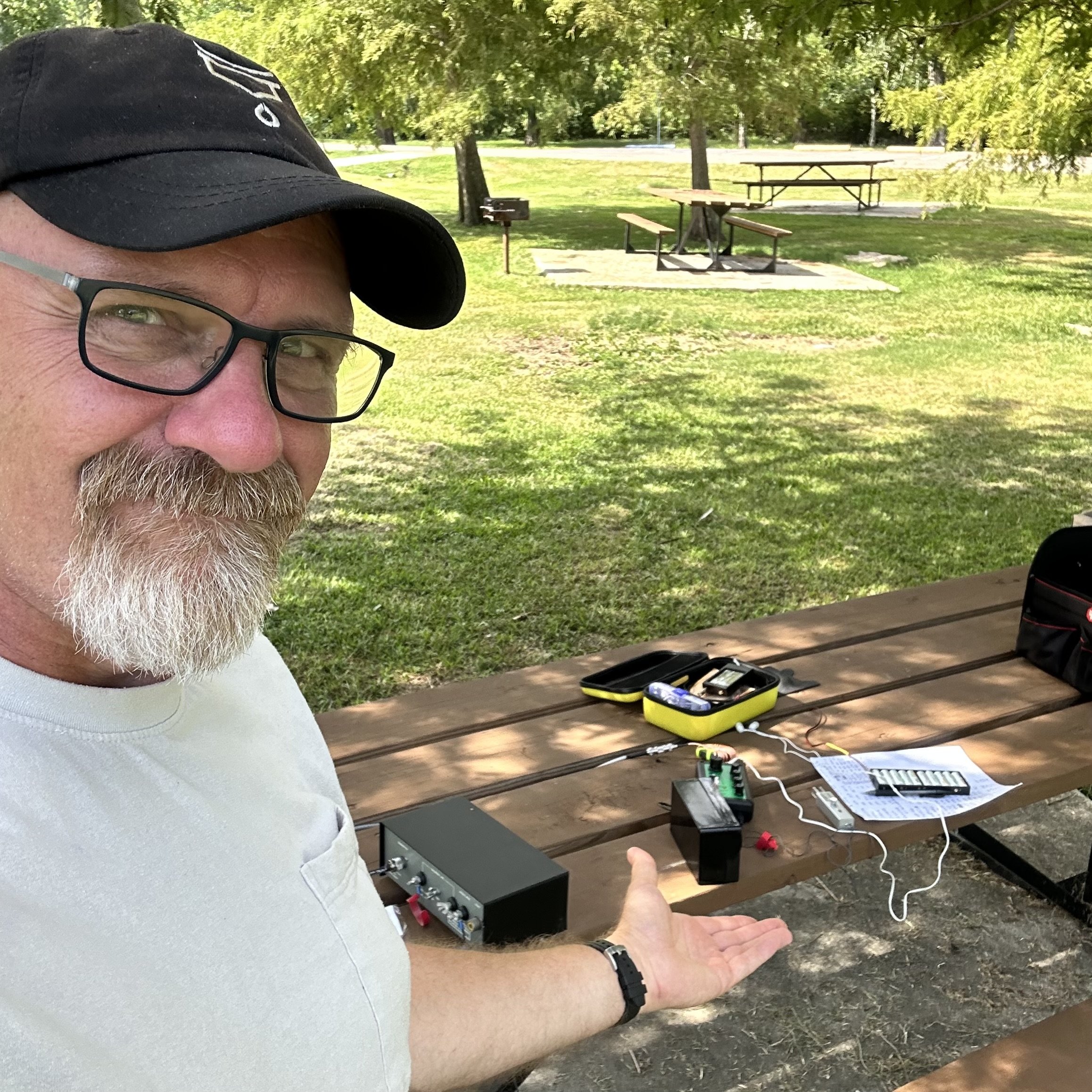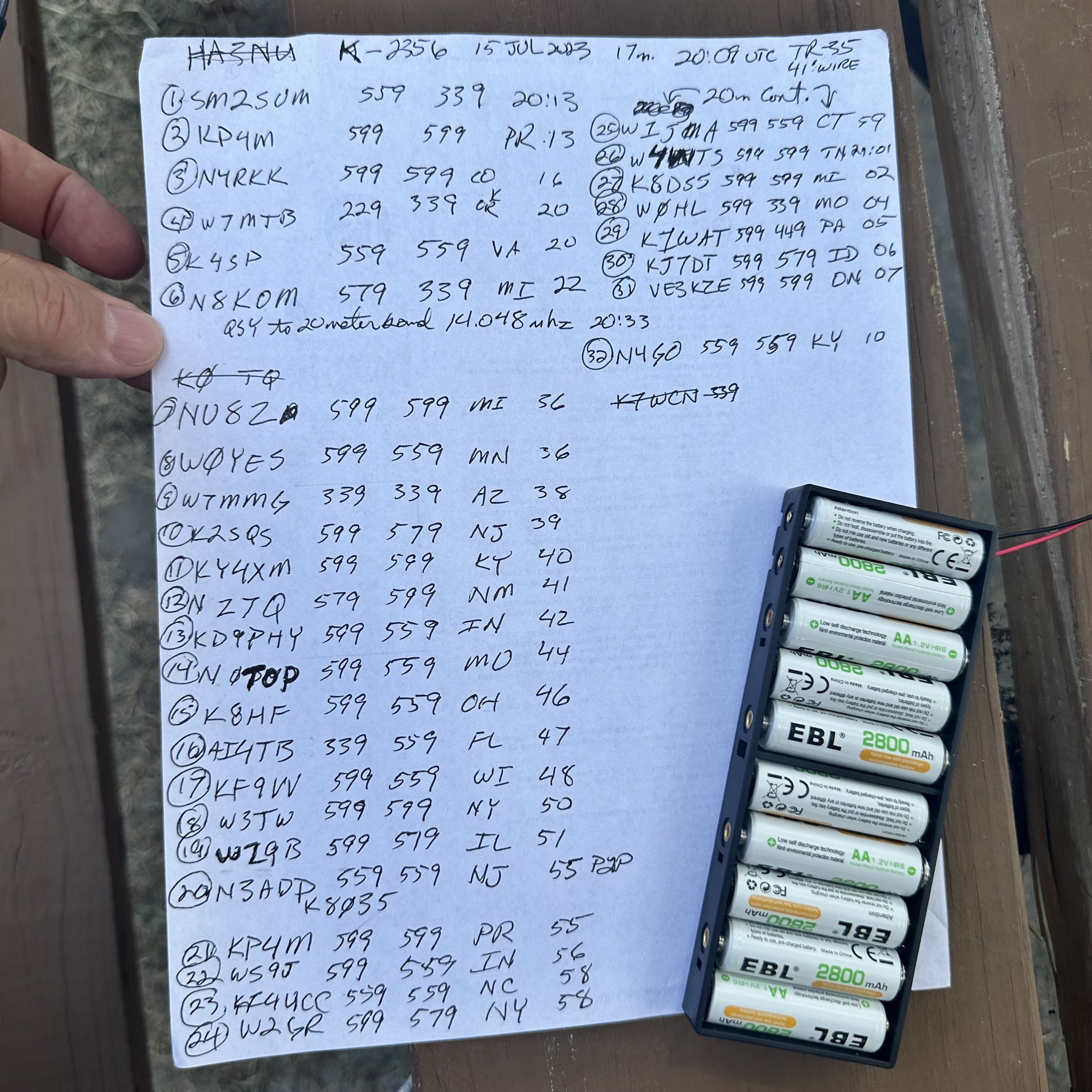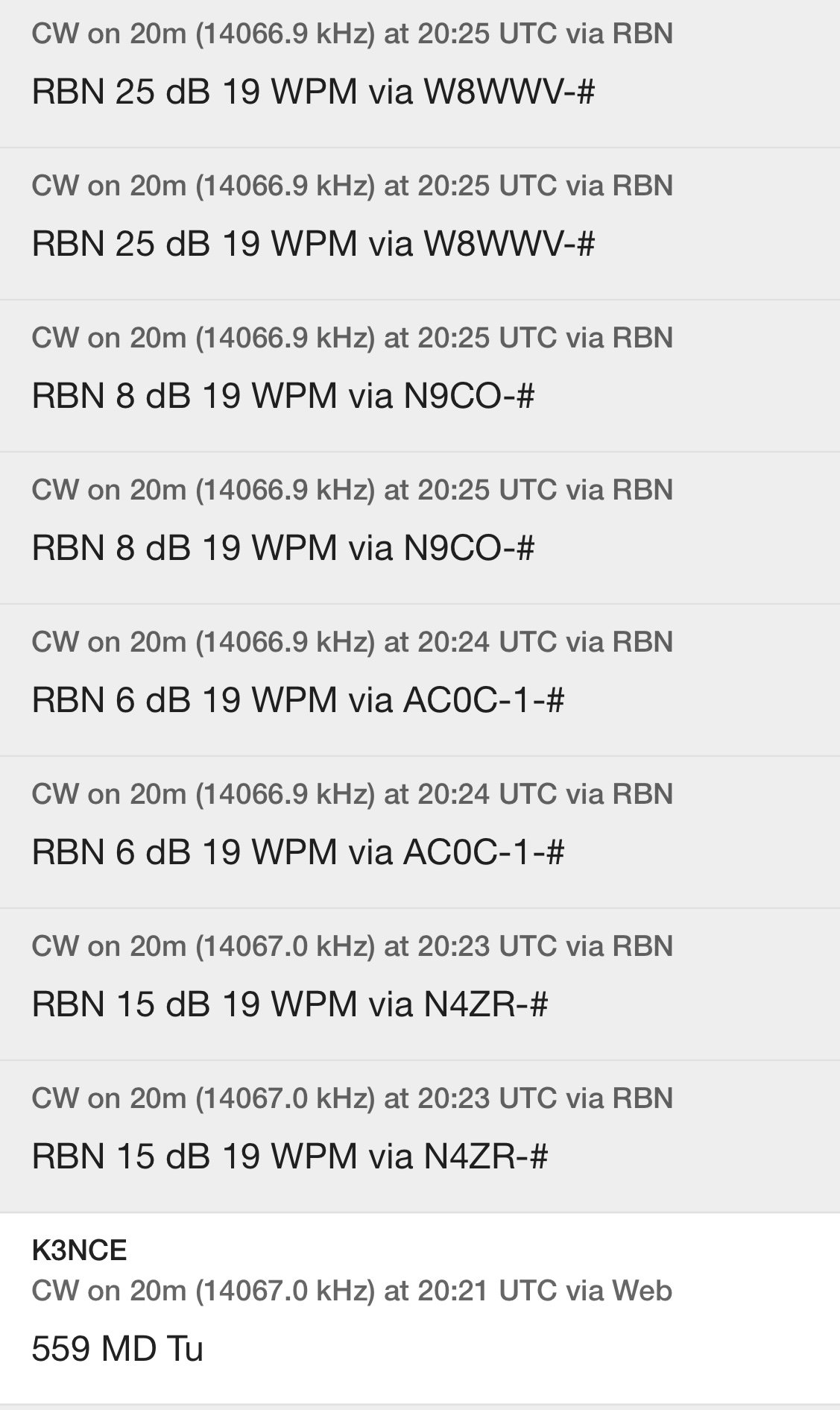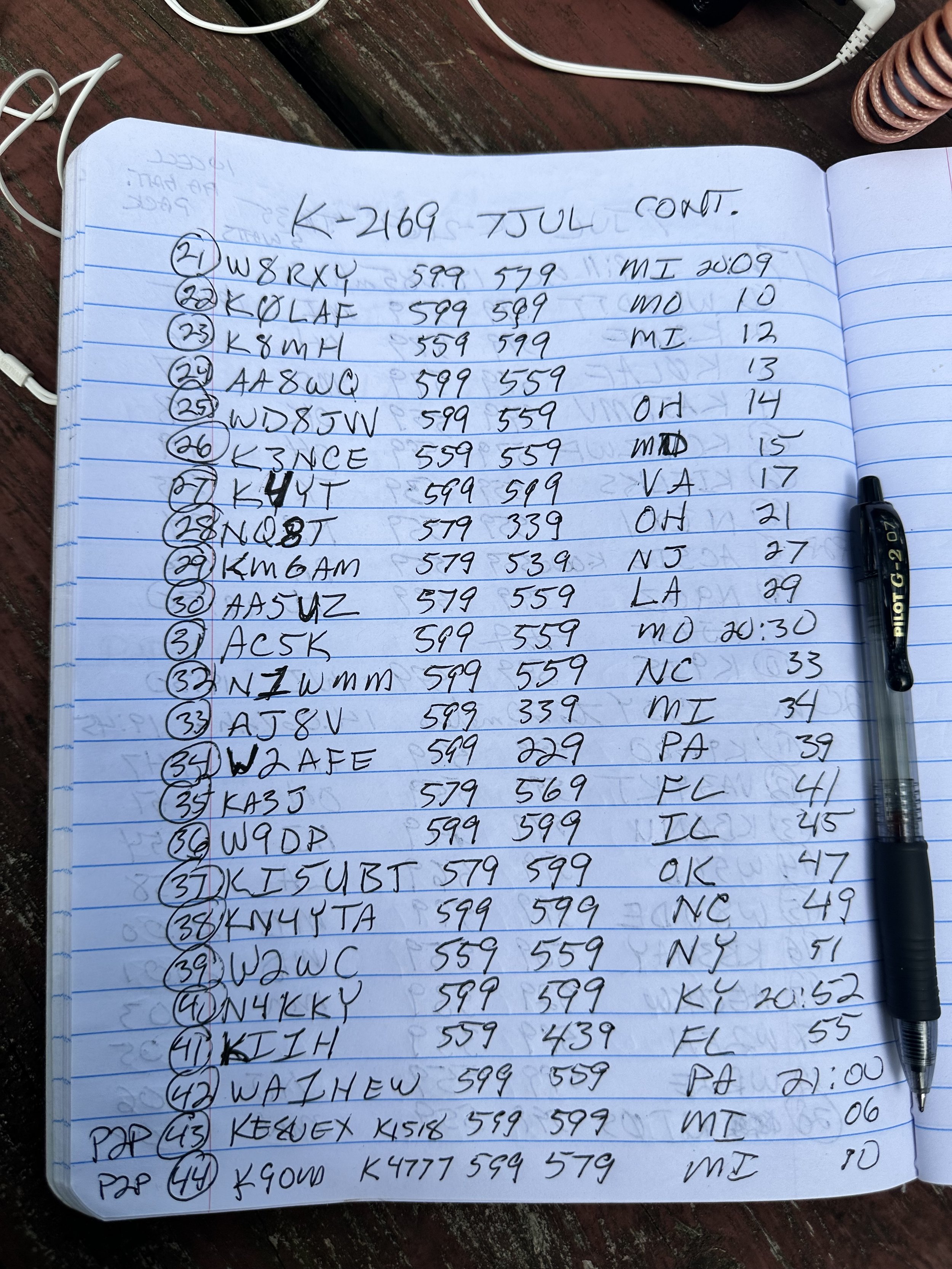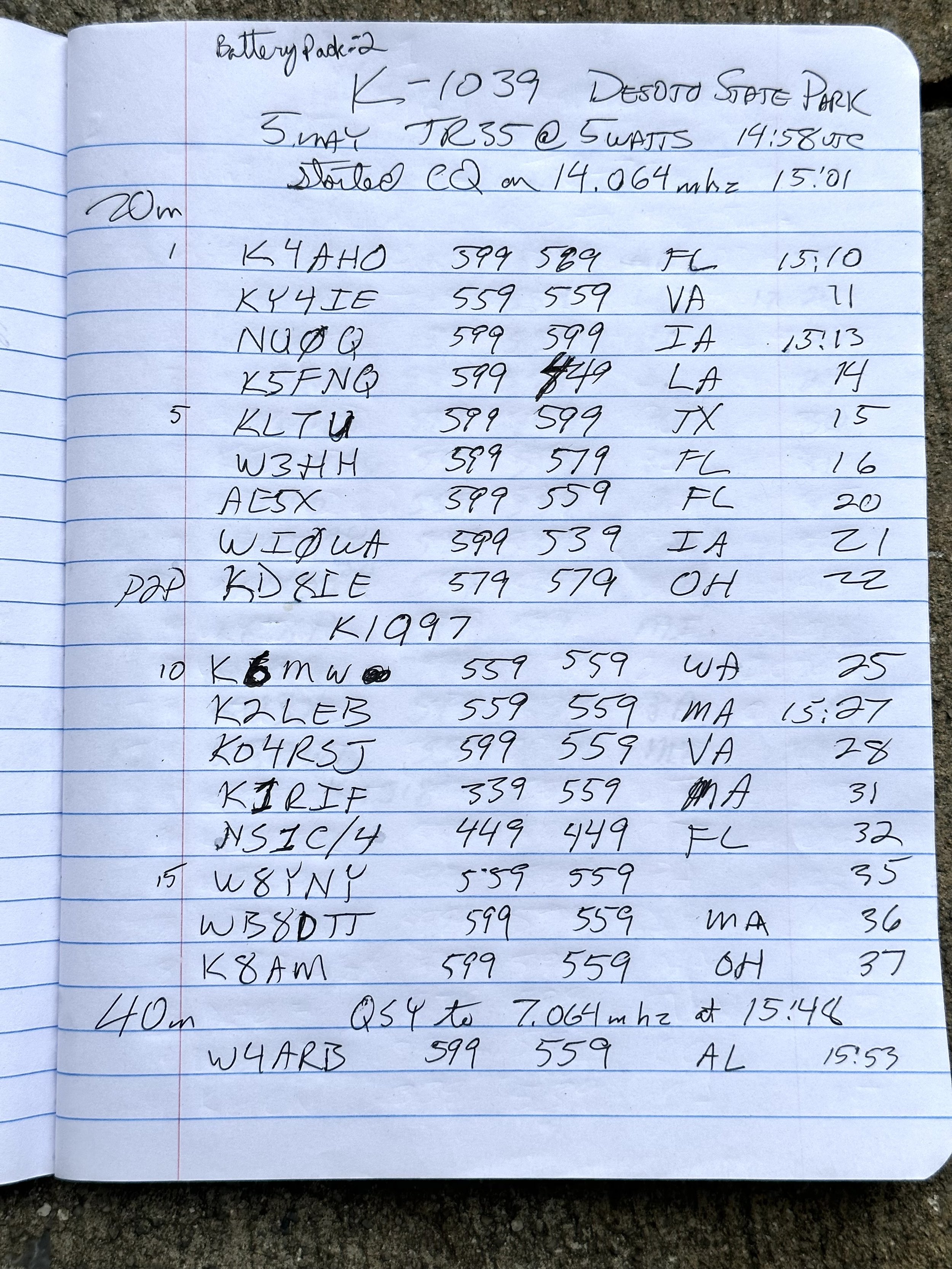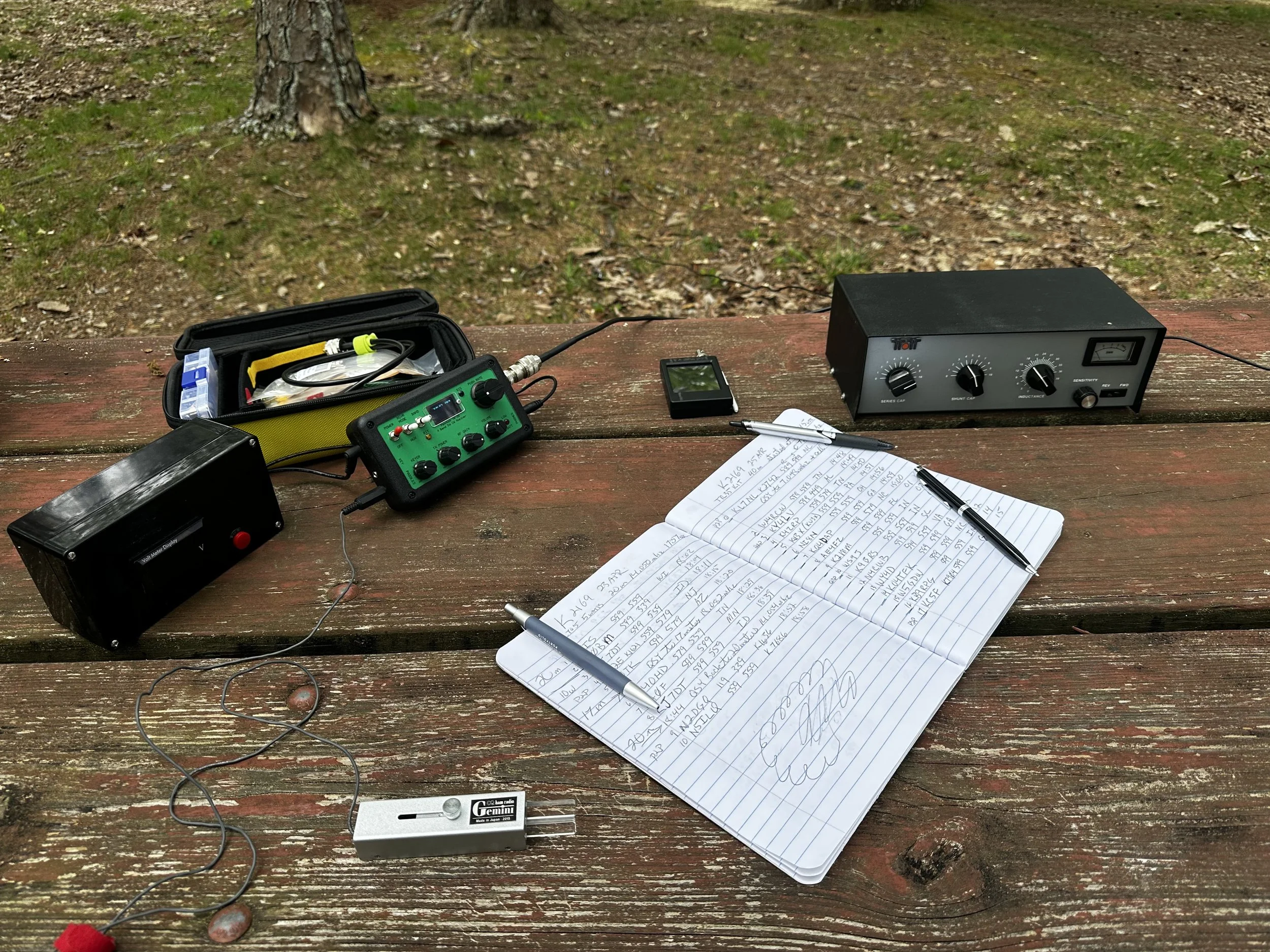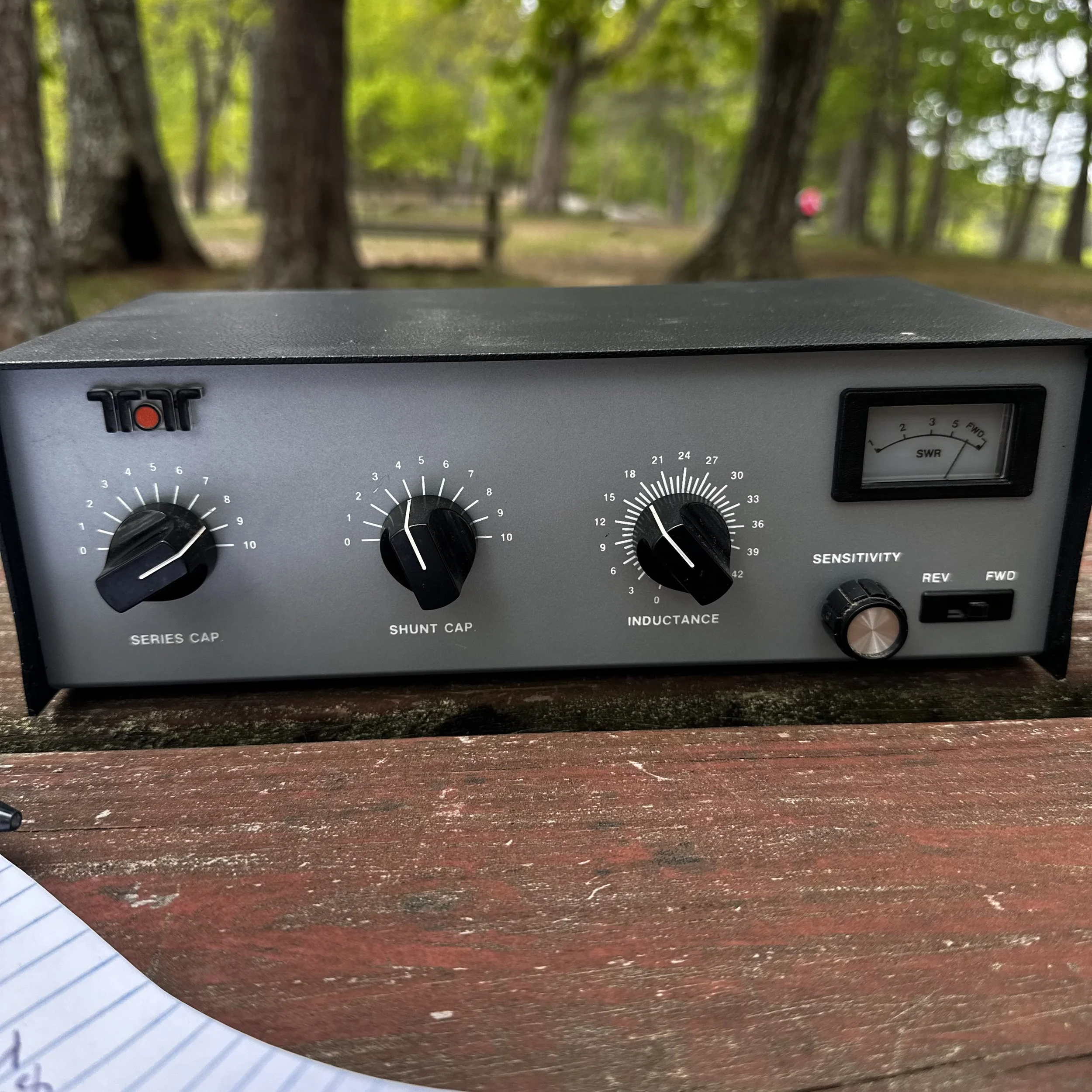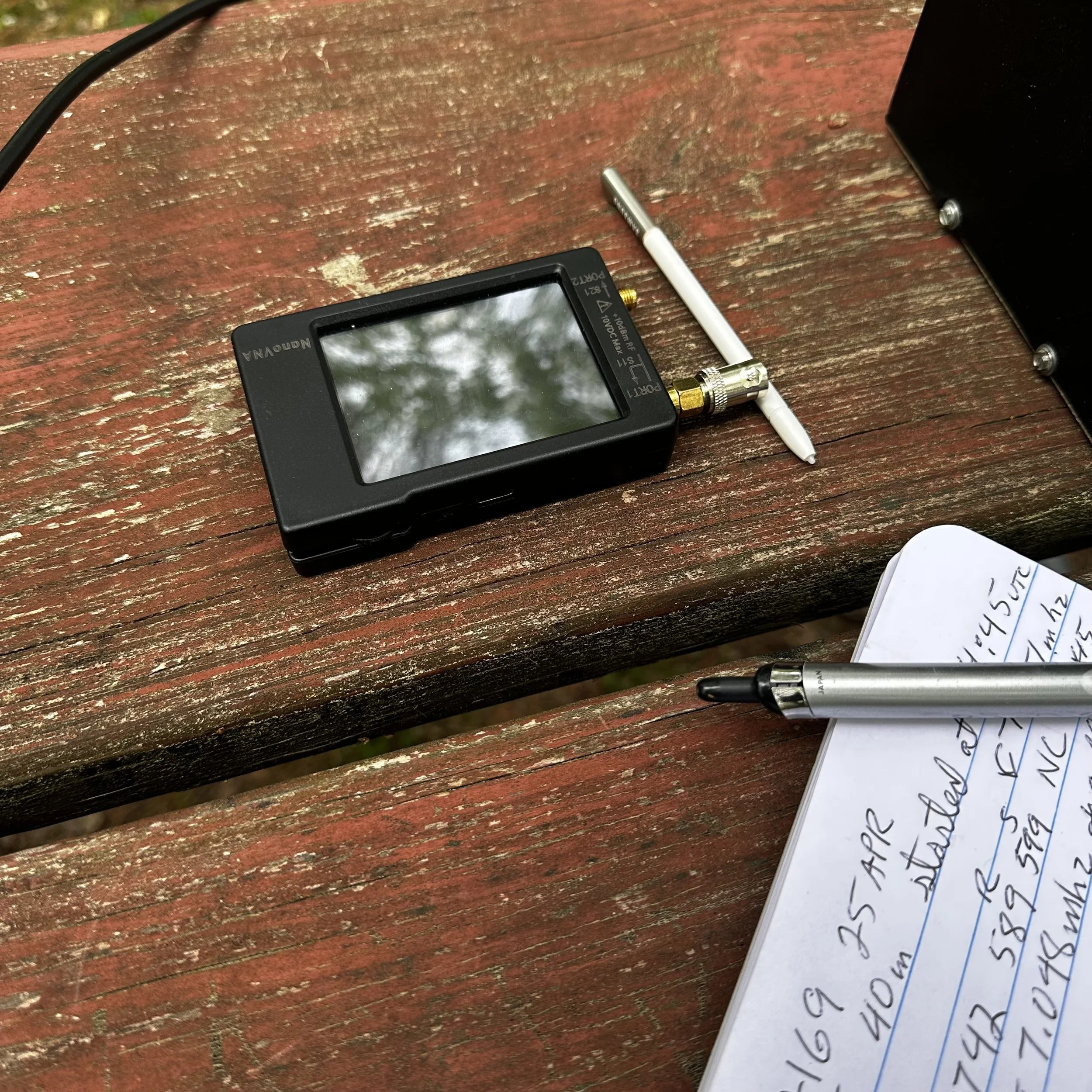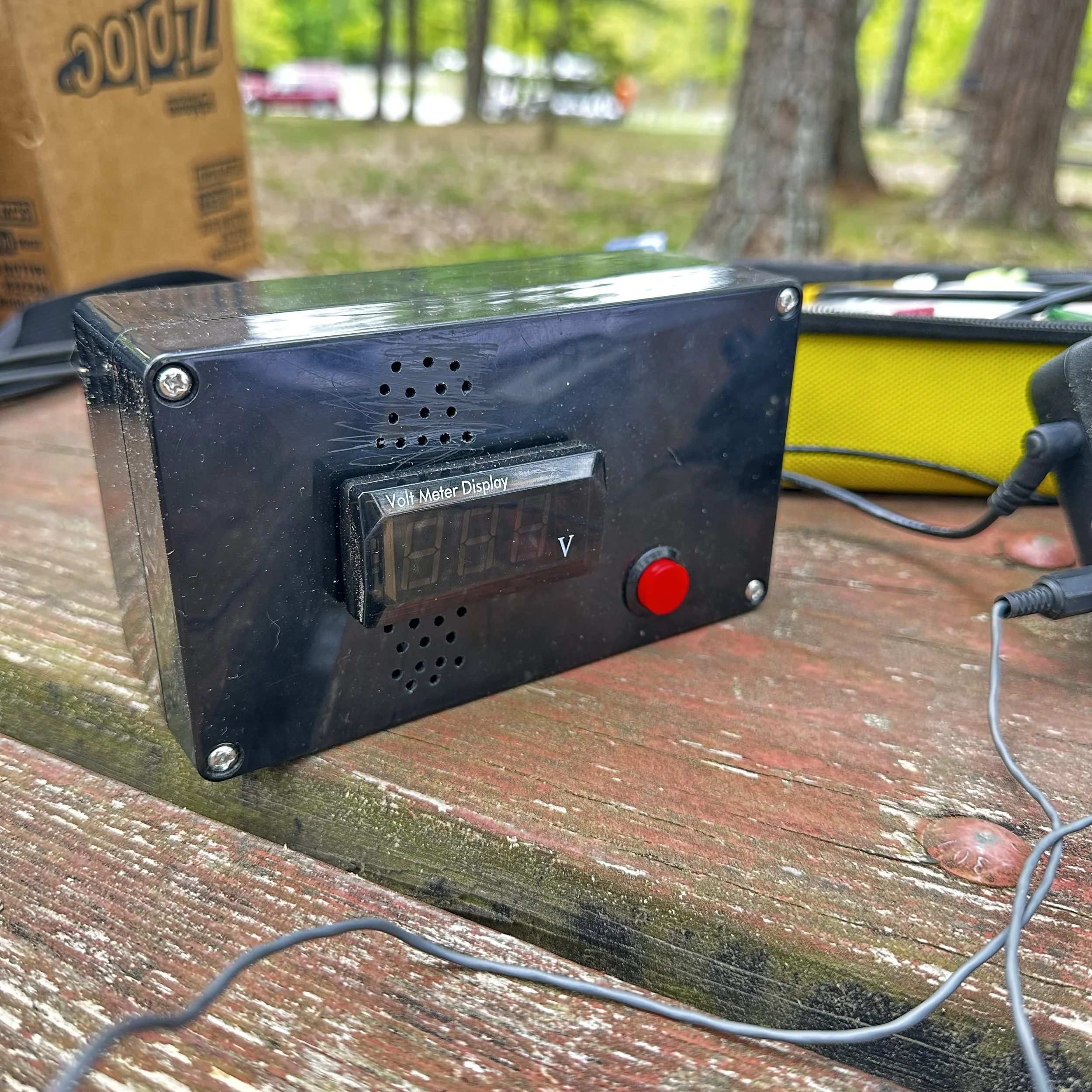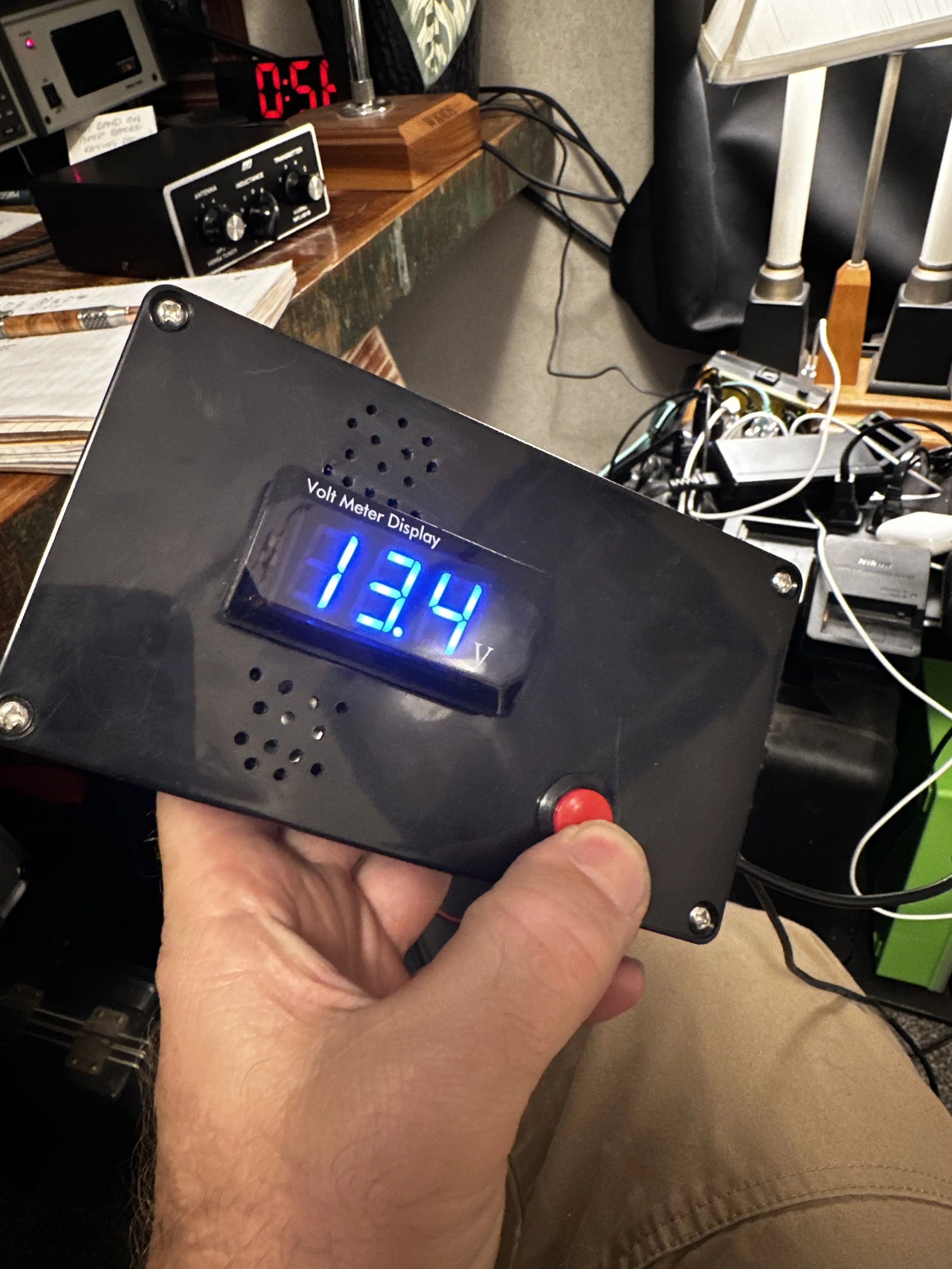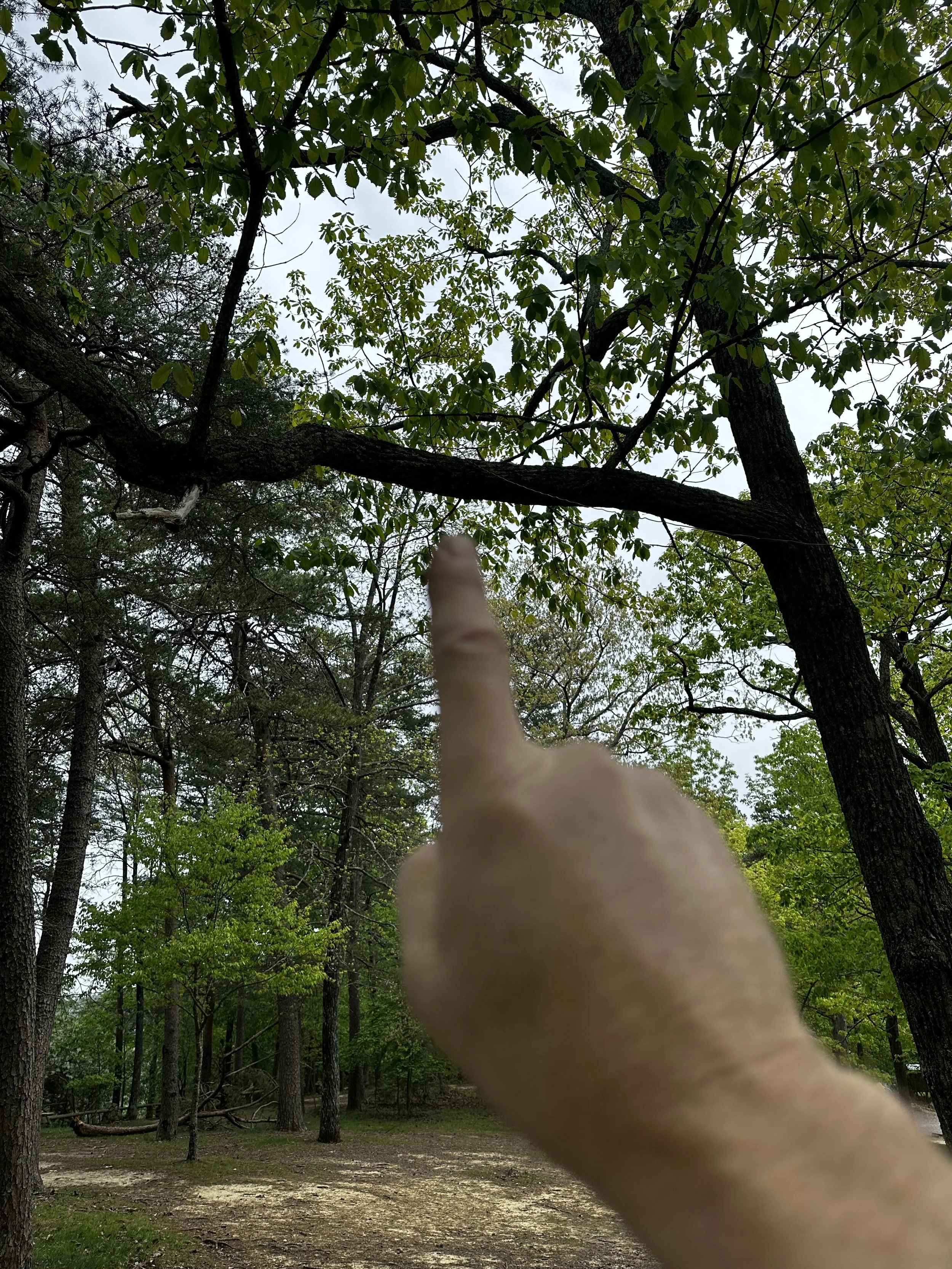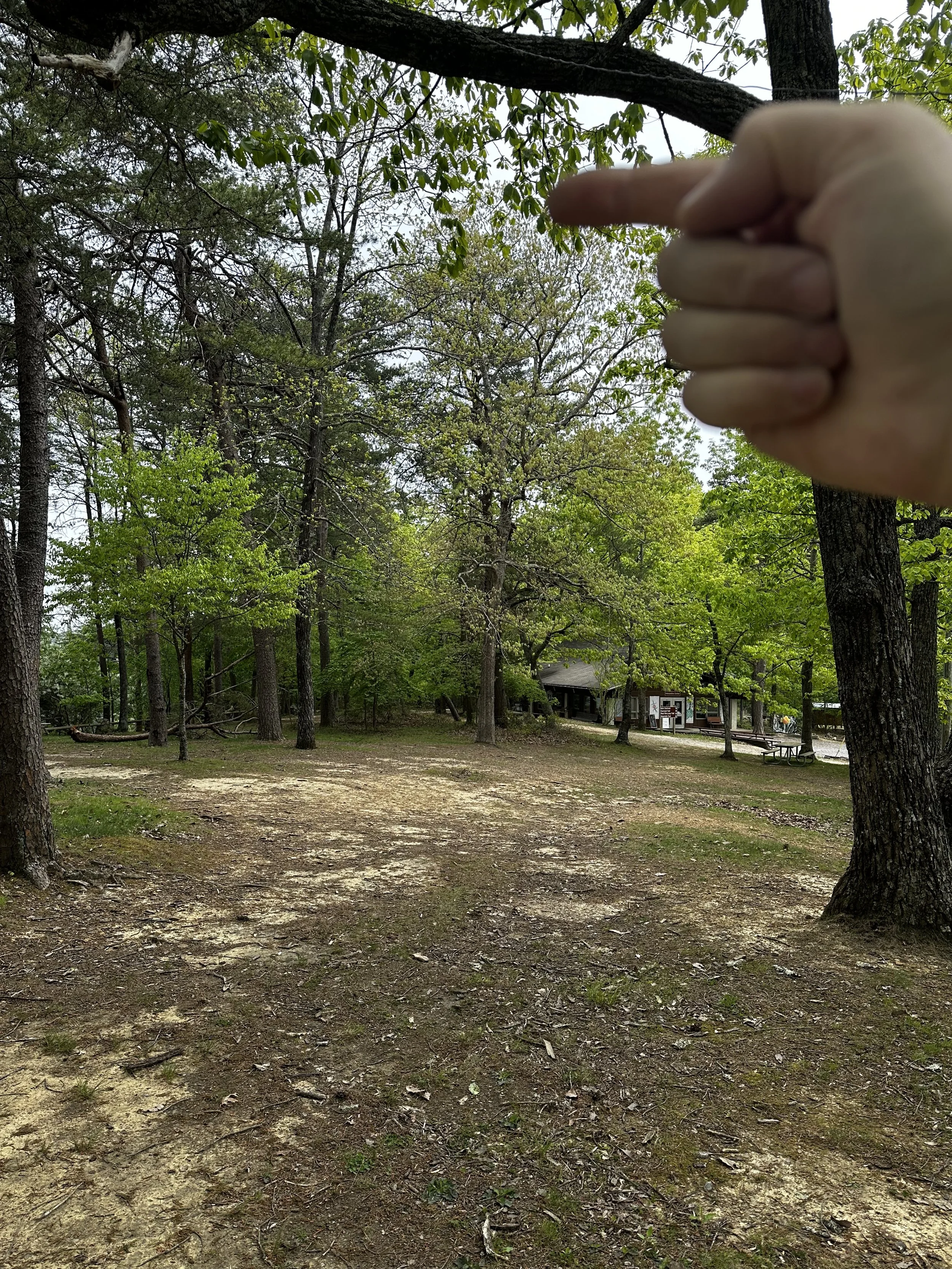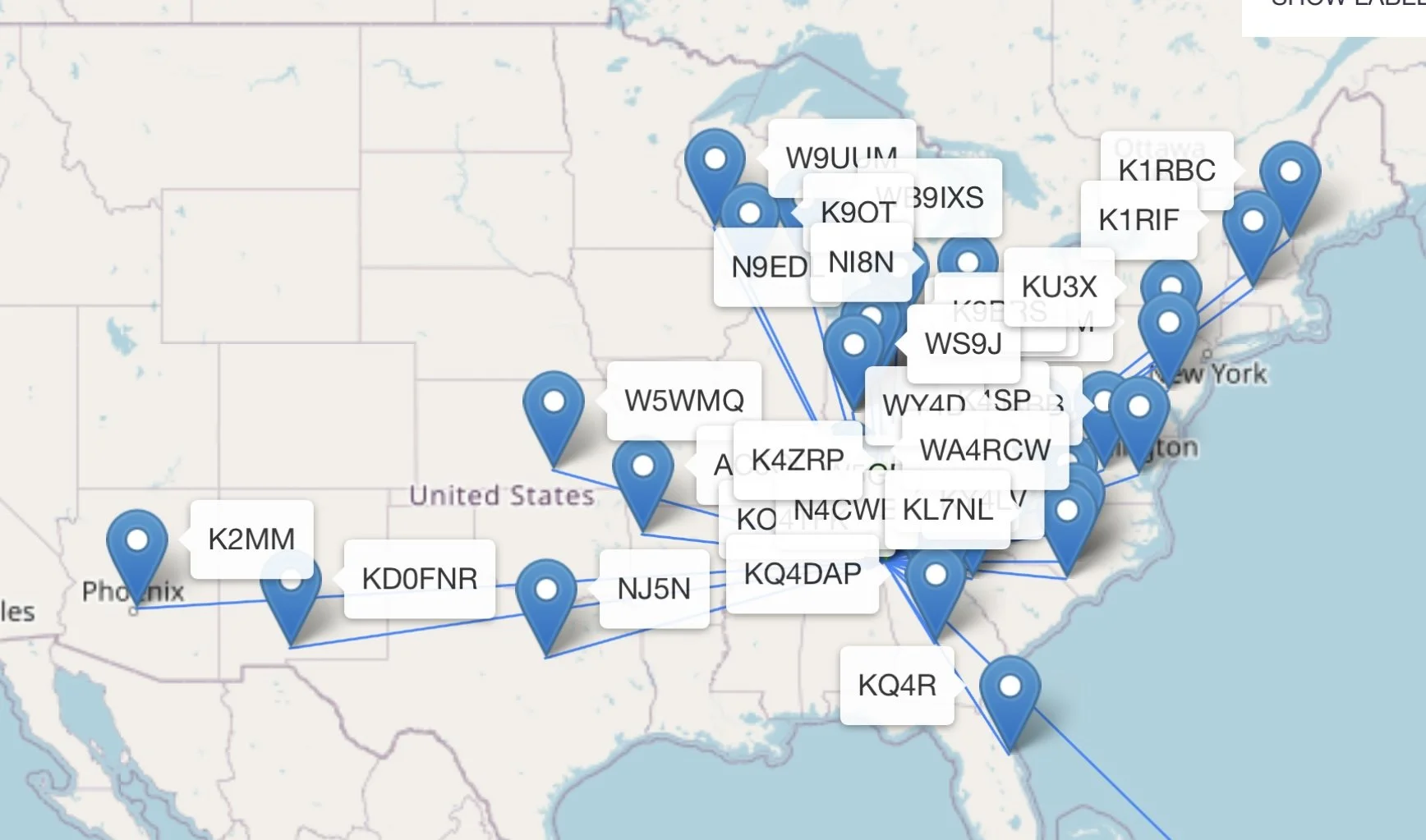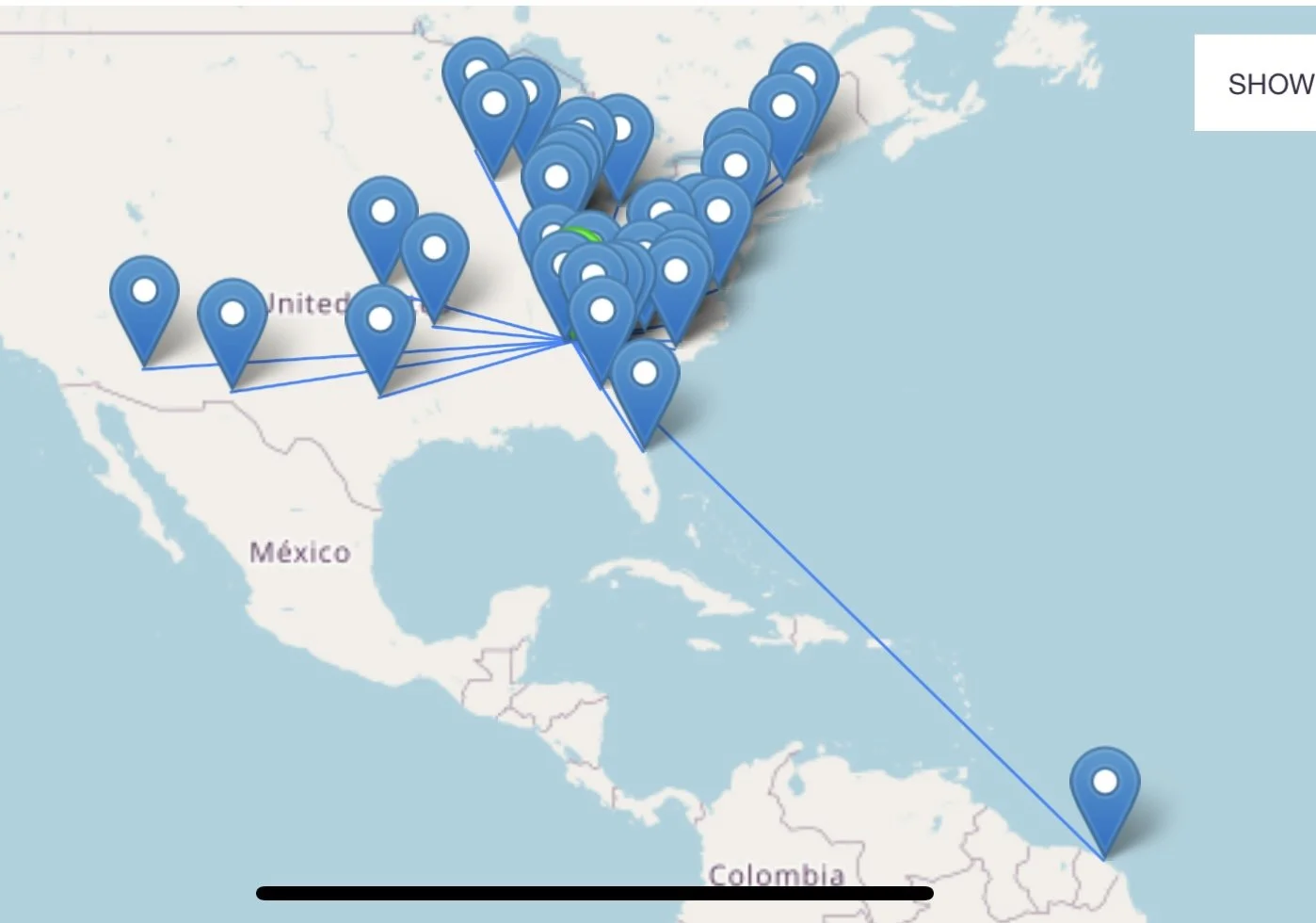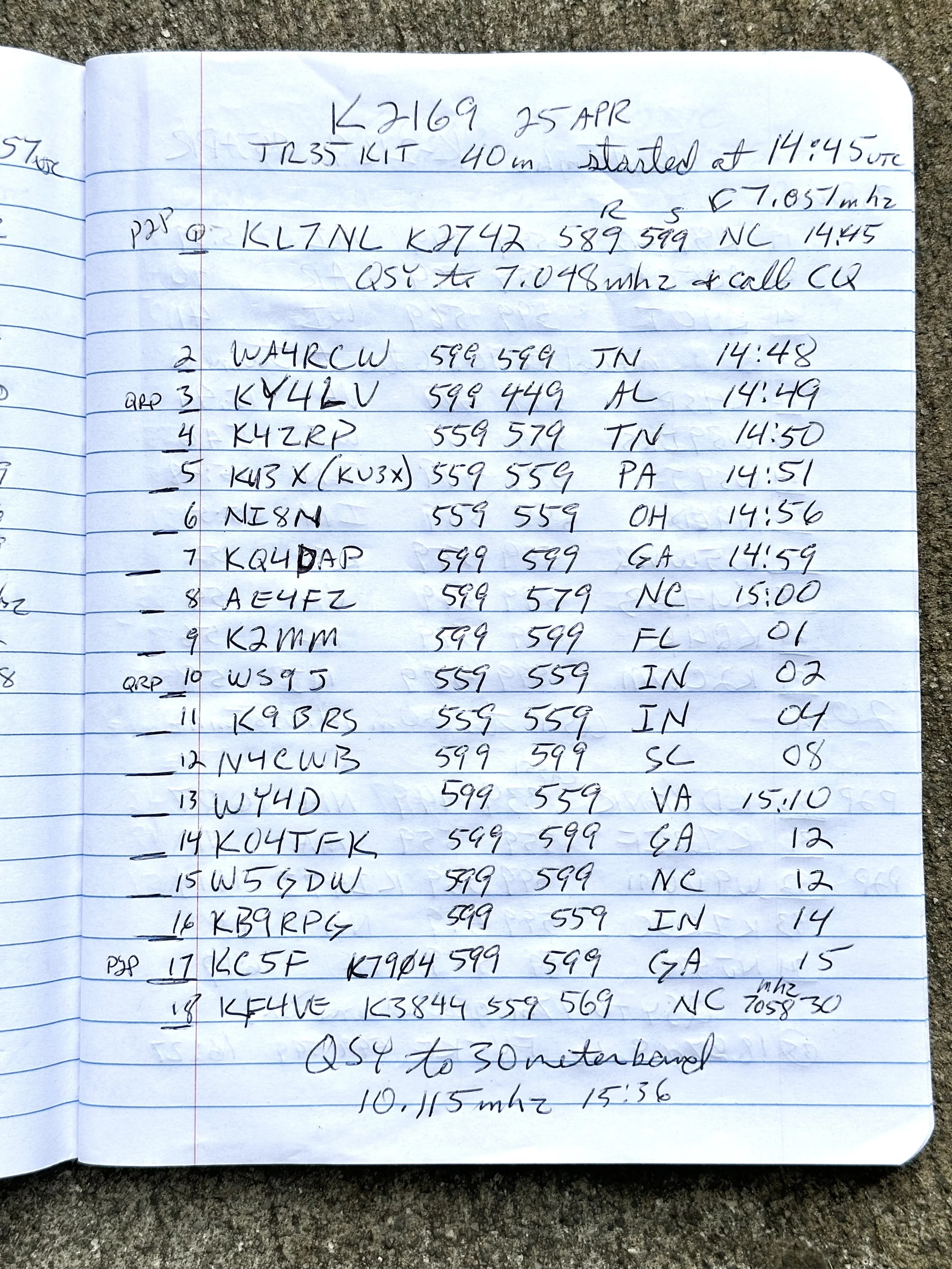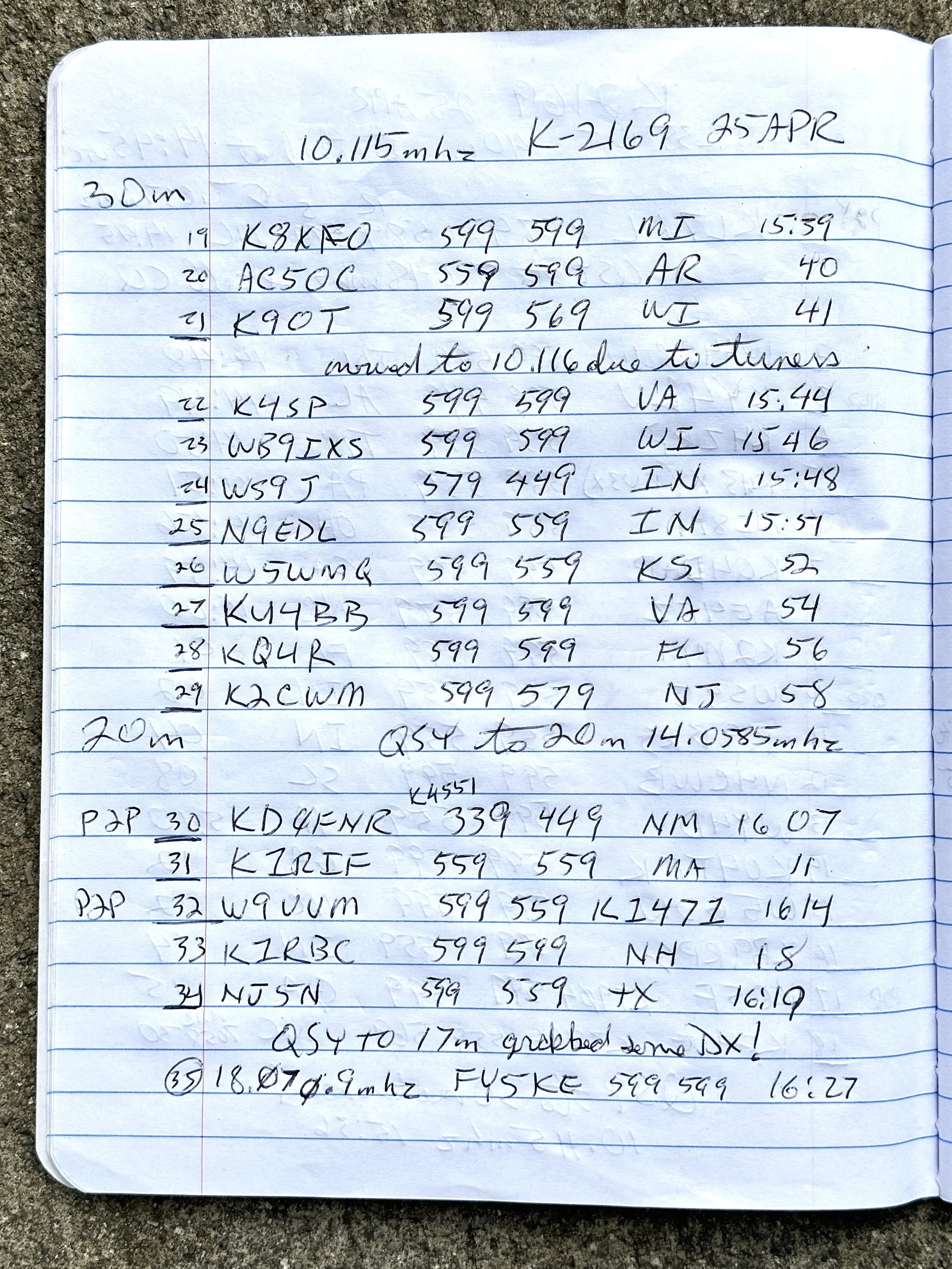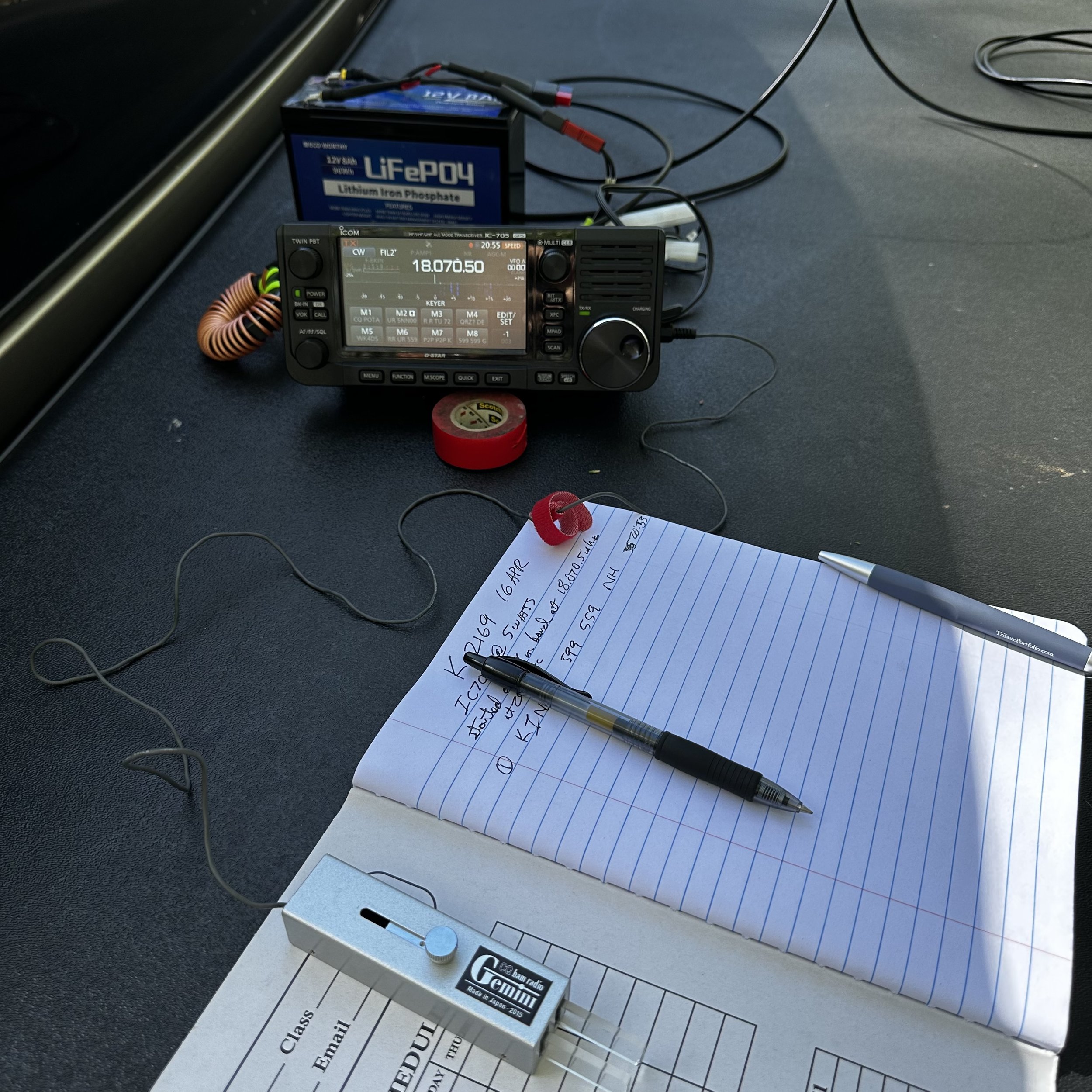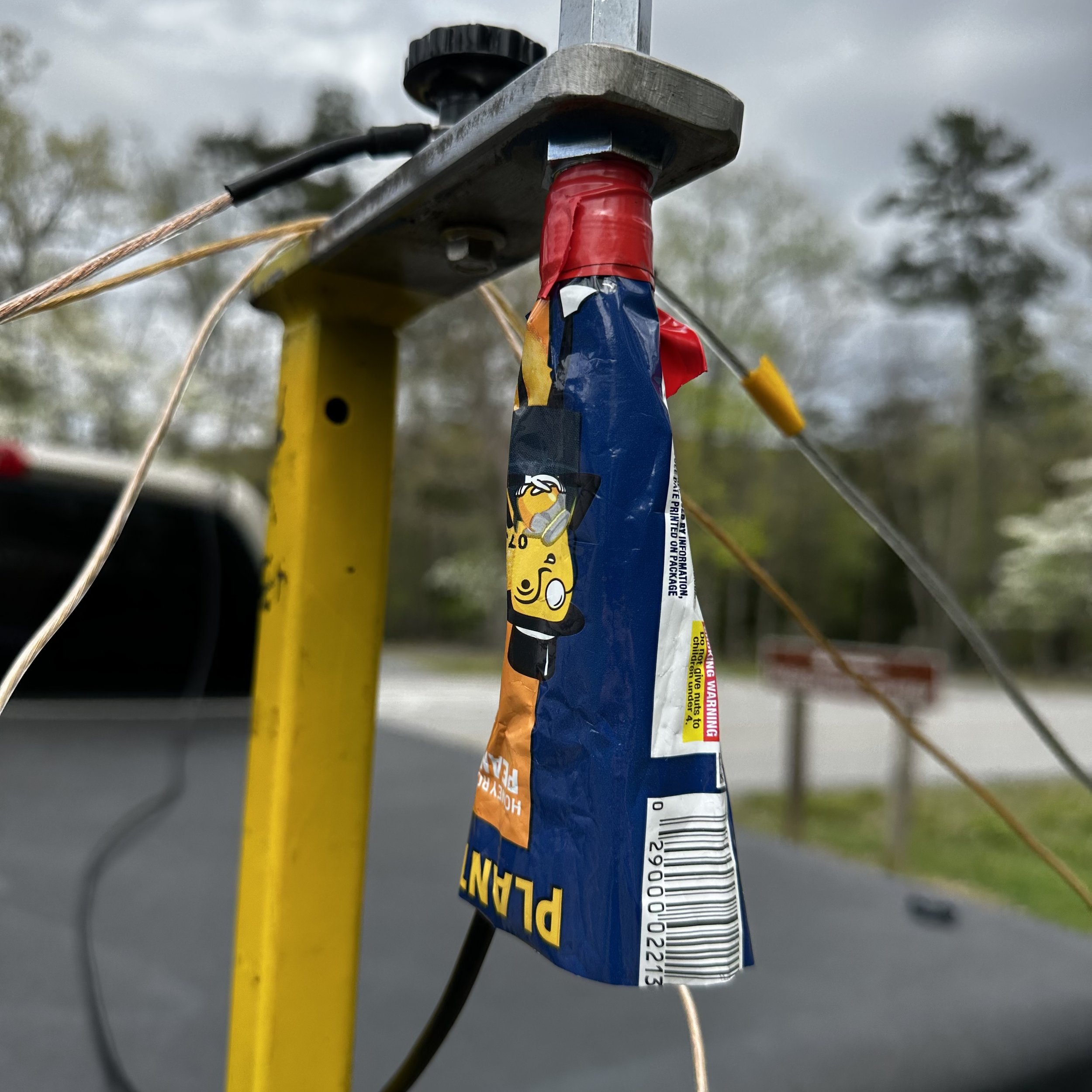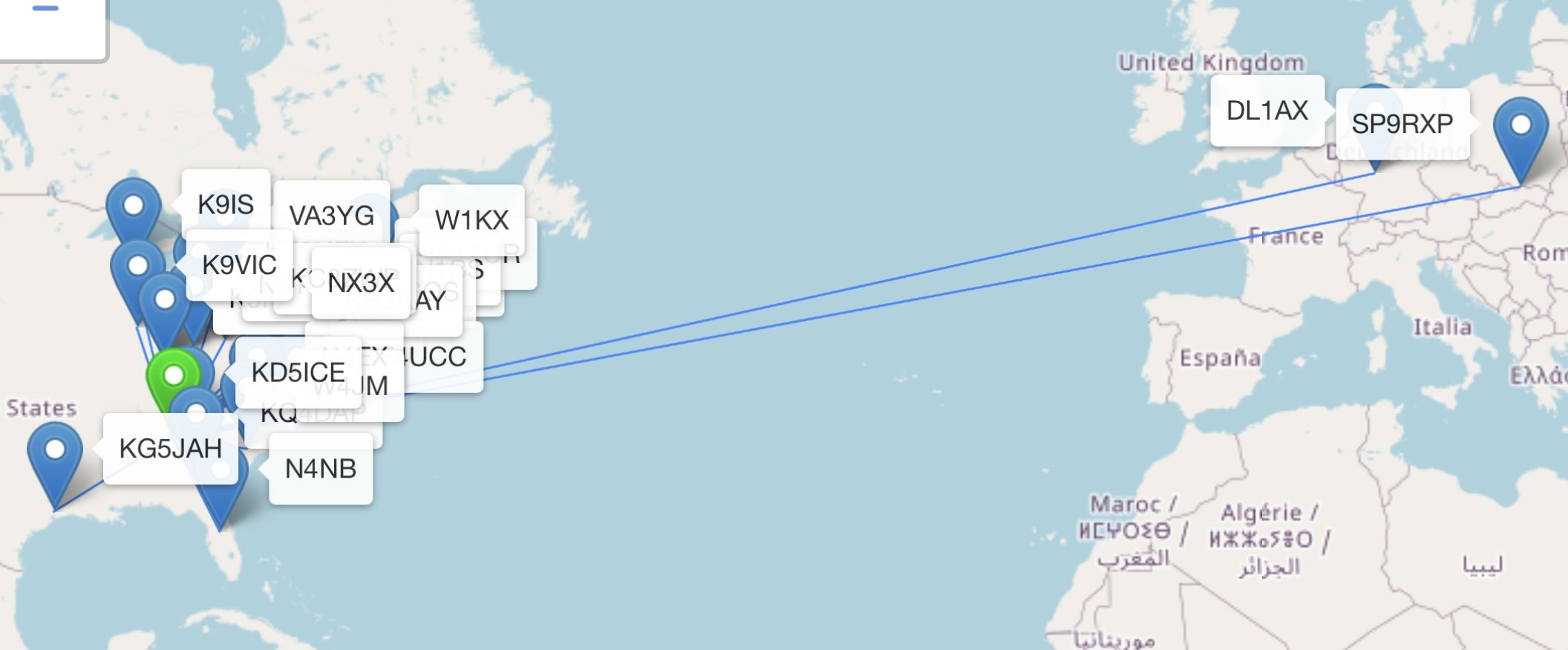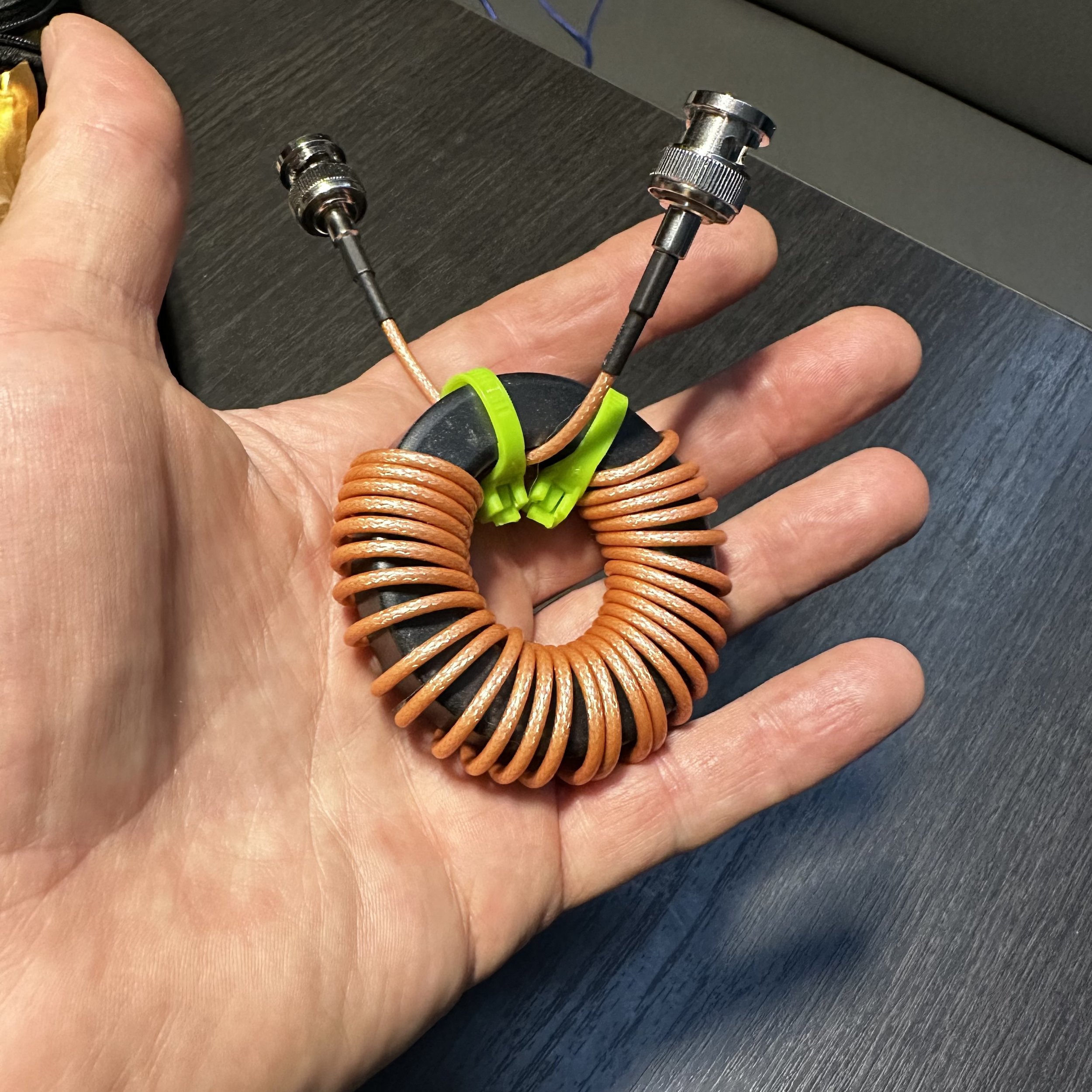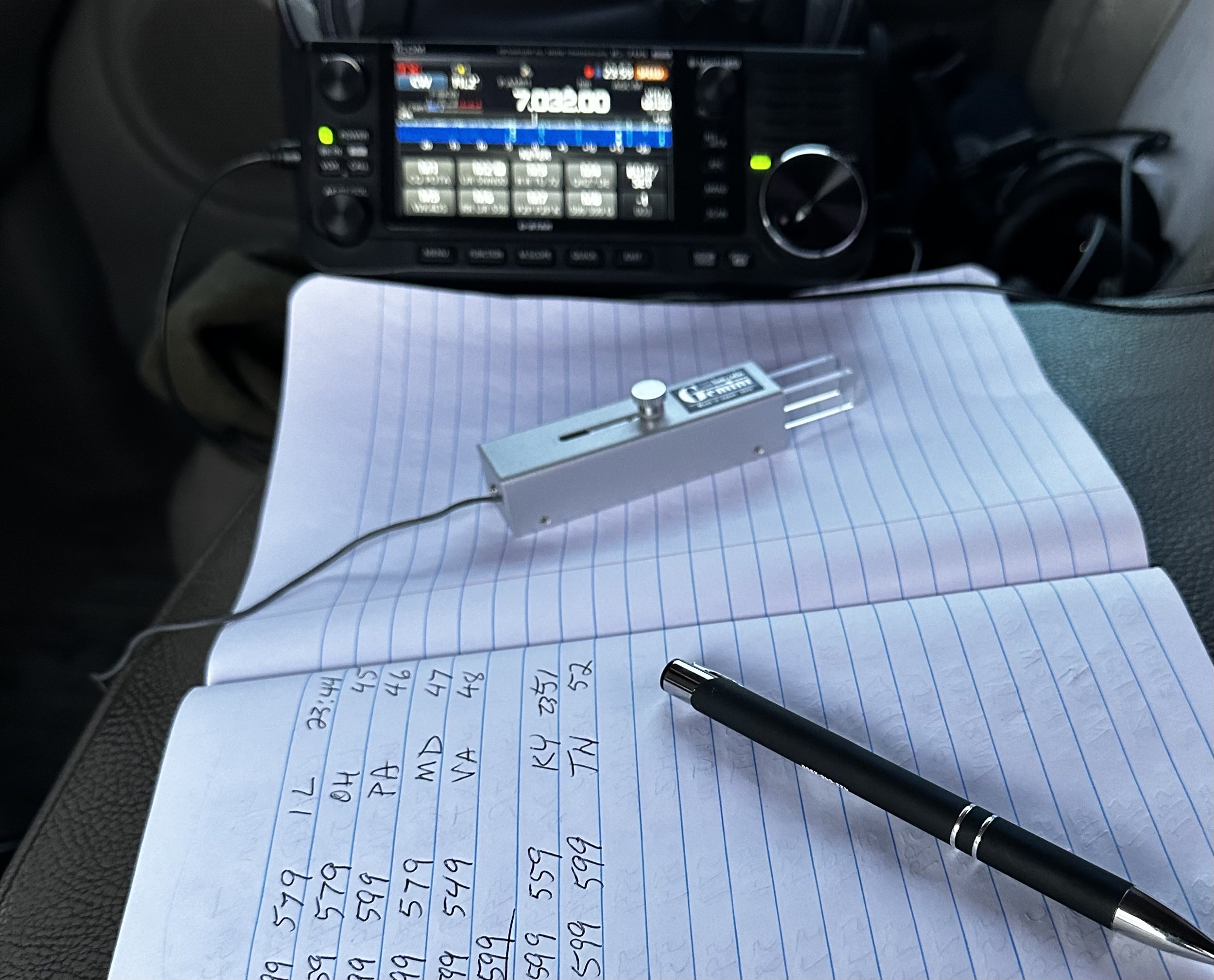I have been here before but never setup like this. K-0716 has park boundaries in both Georgia as well as Tennessee. I have activated both states with this park and have found this to be a great spot for a simple activation when time is short since the pull-off area is inside the park boundary itself. There is also a parking lot at the top of the quarry too and I will use it next time as I think it will be a little bit less exposed as well as I think I can get a wire up in a tree there. This location is called Eagles Nest and is a rock quarry probably used when the old Wauhatchie road was built back in the day, I couldn’t find any reference to the name of the place online, but it has this huge NPS sign so it is a thing…lol.
Today saw use of my trusty 20 meter ham-stick and the single 20 meter tuned counterpoise wire. I ran the counterpoise over to a large rock and draped the weight over it so that it kept the wire taught. This made setup pretty fast and simple, I was on the air in no time really. Although I did start out with the external speaker on my power pack for audio, I quickly realized the error of my way as the traffic was going by on the other side of the truck and made copy difficult at best. So I switched to my ear-buds and suddenly was able to copy all sorts of stations I couldn’t hear before!
I am pretty sure this forms an elevated counterpoise system and makes the antenna work better than laying the counterpoise on the ground…
The station today was setup in the rear floorboard of the truck and I was using the power pack I built containing a 3Ah Bioenno battery. I just used it to prop up the radio so I could see the display are reach the Aux switch for memory keying.
There was a little QSB on the bands today, but for the most part they were open really good, I was able to get runs of 10 minutes at times with strong signals coming in and I was even getting decent reports back to me. for the most part. But what was strange was that after I worked N9EDL it was like the band just closed or something, I called CQ for 10 or 15 minutes without so much as a peep coming back to me. It was like someone just turned the switch off… Then again the last 5 or so in the log are starting to spread out more than the previous contacts so it might have just been a deep null in propagation and if I had stuck it out it would have come back.
I took that as time to close up shop though and shut down the radio and packed it all up. It was a great little activation and I had a great time doing it even with the traffic on the other side of the truck. Good quality headphones saved the day here, so that is the lesson from this trip. Until next time. 72 de WK4DS




